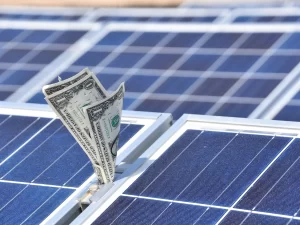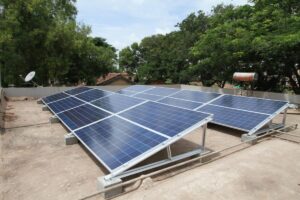Understanding Renewable Energy
Renewable energy is a term used to describe energy sources that are naturally replenished and have a minimal impact on the environment. In simple terms, it refers to energy derived from sources such as sunlight, wind, water, and geothermal heat. These sources are considered sustainable because they can be used without depleting their finite reserves.
The use of renewable energy has gained significant attention in recent years due to its numerous benefits for both the environment and homeowners. By incorporating renewable energy systems into our homes, we can reduce our reliance on fossil fuels, lower energy costs, and contribute to a cleaner and greener future.
Benefits of Renewable Energy for Homes
Reduced Electricity Bills: One of the key advantages of integrating renewable energy into your home is the potential for significant cost savings on your electricity bills. By harnessing the power of the sun, wind, or other renewable sources, you can generate your own electricity and reduce your reliance on the grid.
Environmental Impact: Another important benefit of using renewable energy is its positive impact on the environment. Unlike traditional energy sources that release harmful greenhouse gases, renewable energy systems produce little to no emissions, helping to mitigate climate change and improve air quality.
Energy Independence: By generating your own renewable energy, you can become more self-sufficient and less reliant on external energy sources. This energy independence provides stability and resilience, especially during power outages or disruptions in the grid.
Types of Renewable Energy Sources
There are several types of renewable energy sources that can be harnessed for residential use. Let’s explore a few of the most common ones:
Solar Energy: Solar energy is obtained by capturing the sun’s rays and converting them into usable electricity through the use of solar panels. This clean and abundant source of energy is particularly popular for residential applications.
Wind Energy: Wind turbines harness the power of the wind to generate electricity. They are typically installed in areas with consistent wind patterns, such as coastal regions or open plains.
Hydropower: Hydropower utilizes the energy of flowing or falling water to generate electricity. It can be harnessed through various methods, including dams, tidal power, and run-of-river systems.
Geothermal Energy: Geothermal energy is derived from the heat within the Earth’s crust. It involves tapping into underground reservoirs of hot water or steam to produce electricity or to heat and cool buildings.
These are just a few examples, and there are other emerging technologies like biomass and hydrogen that also hold great potential for residential energy production.
Assessing Your Home’s Energy Needs
Before embarking on a renewable energy project for your home, it’s crucial to assess your energy needs accurately. Understanding your current energy consumption patterns and requirements will help determine the appropriate renewable energy system for your home.
Energy Audit: Conducting an energy audit involves evaluating your home’s insulation, appliances, and lighting, as well as analyzing your energy bills. This assessment will identify areas where energy efficiency improvements can be made, potentially reducing your overall energy demand.
Load Calculation: A load calculation involves determining the total amount of electricity needed to power your home. It takes into account factors such as the number of occupants, appliances, lighting, and heating and cooling requirements. This calculation will help determine the capacity of the renewable energy system you’ll need.
Choosing the Right Renewable Energy System
Once you have assessed your energy needs, it’s time to choose the right renewable energy system for your home. The selection process involves considering a few key factors:
Available Resources: Assess the availability and potential of renewable energy resources in your area. Consider factors such as solar exposure, wind patterns, or proximity to water bodies.
System Size: Determine the appropriate system size based on your energy needs and available space. This will depend on factors like roof area for solar panels or land availability for wind turbines.
Budget and Financing Options: Evaluate your budget and explore financing options to determine the feasibility of your renewable energy project. There may be incentives, grants, or financing programs available to help offset the initial investment costs.
Installation and Maintenance Considerations
The installation of a renewable energy system requires careful planning and professional expertise. Hiring a reputable installer with experience in the specific technology you choose is essential to ensure a smooth and efficient installation process.
Once your renewable energy system is up and running, regular maintenance is crucial to maximize its performance and longevity. This may include periodic inspections, cleaning, and servicing of components to ensure optimal efficiency.
Financial Incentives for Renewable Energy
To encourage the adoption of renewable energy, various financial incentives are available to homeowners. These incentives can help offset the initial costs and make renewable energy systems more affordable. Examples of financial incentives include tax credits, rebates, grants, and net metering programs.





